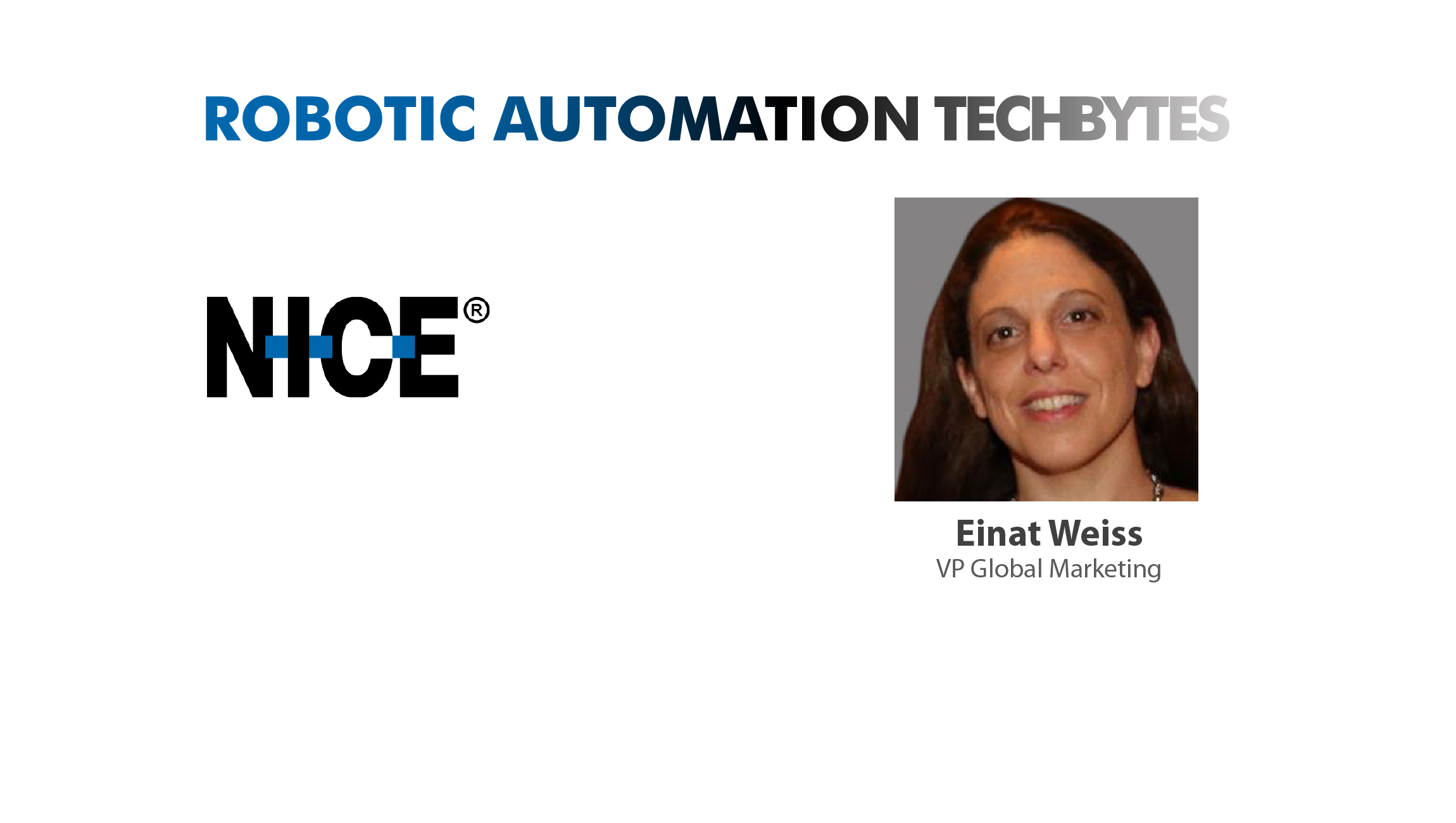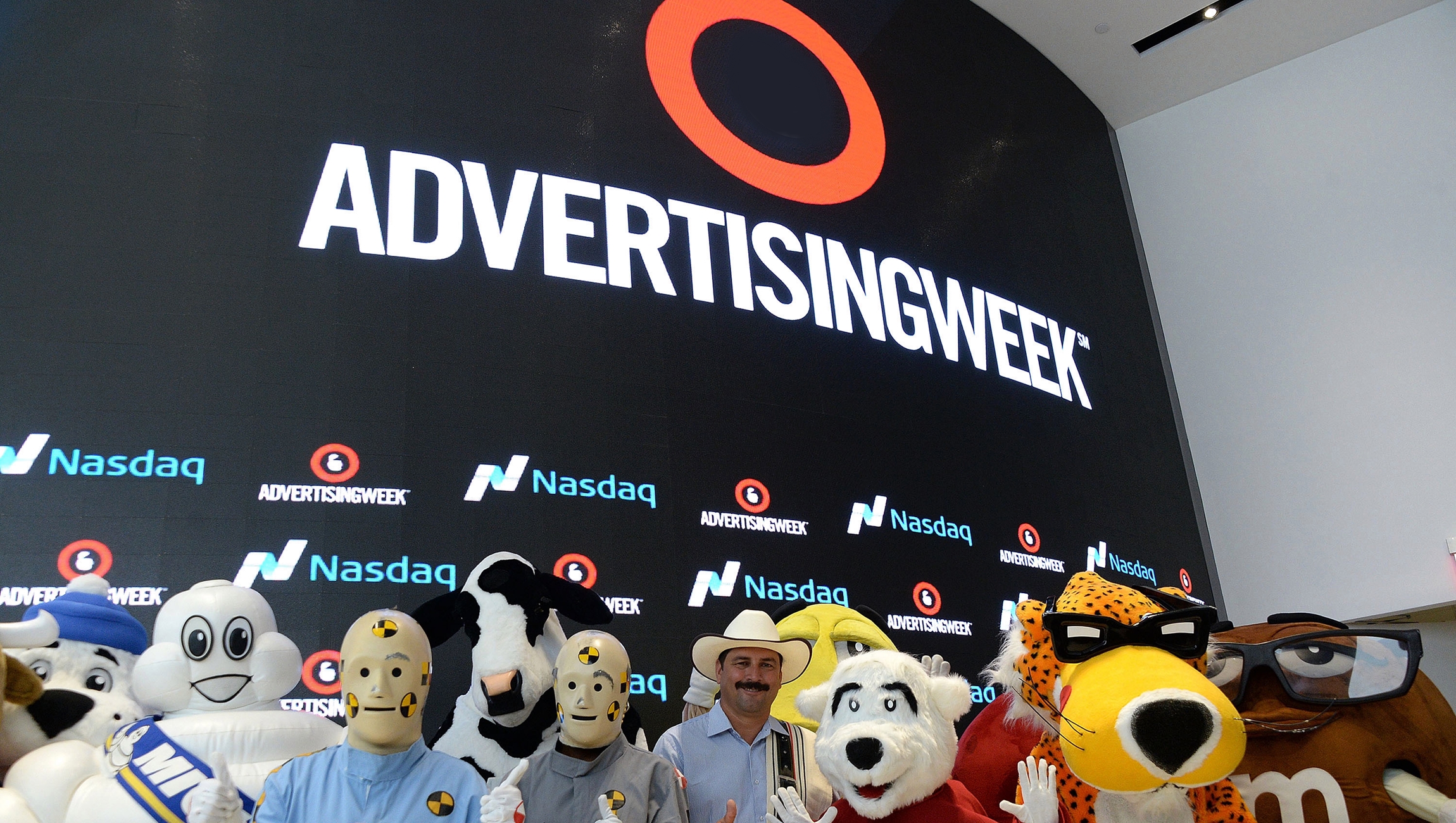Einat Weiss
VP, Global Marketing, NICE
Last week, NICE announced the next iteration of its cognitive Robotic Automation platform featuring much-enhanced machine learning capabilities that can manage, consume and integrate more complex sets of unstructured data. The result—businesses deploying the NICE Robotic Automation platform can decrease manual effort by up to 85%! We spoke to Einat Weiss, VP of Global Marketing, NICE, to understand how the company brings together data science, analytics and automation technologies for better Customer Experience (CX).
Html code here! Replace this with any non empty text and that's it.
MTS: How does NICE bring together analytics, Big Data, AI and automation to deliver a single unified Customer Experience?
Einat Weiss: Companies today must be able to deliver faster, better service over a variety of channels. NICE’s Robotic Automation Solution combines artificial intelligence and automation, allowing organizations to create a more efficient and intelligent workforce that fuses the skill sets of humans and robots to meet their SLAs 100 percent of the time and create a new standard of service. The use of AI also enables organizations to identify which processes lead to poor customer satisfaction – by correcting these processes through automation, they can significantly boost customer satisfaction levels.
NICE’s next generation analytics technology also plays a central role in this process, allowing companies to gain insight into massive amounts of Big Data, including the unstructured data, from their customer interactions and then fuse this with AI to create automated workflows for the simplest to the most complex processes.
Failing to automate means longer customer wait times and compromised accuracy. As process automation takes over repetitive, routine manual tasks, human error is eliminated, and costly mistakes no longer happen. This leads to a better customer experience and a happier workforce.
MTS: How does NICE differentiate between technologies for speech analytics and natural language processing?
Einat: The NICE Nexidia Neural Phonetic Speech Analytics™ technology offers a unique and more accurate method of natural language processing by combining phonetic indexing and search with Large Vocabulary Continuous Speech Recognition (LVCSR). NICE Nexidia Analytics is the only interaction analytics solution that uses Deep Learning neural networks, which utilize machine learning and artificial intelligence to build predictive models that effectively operationalize findings. By analyzing the audio directly, accuracy of data results is much higher than more traditional analysis that is performed on text transcriptions of audio. With this capability, Neural Phonetic Speech Analytics produces word-level transcription of the audio, a phonetic index and AI-based customer sentiment scores in real-time or batch mode operation.
Additionally, NICE Nexidia Analytics offers omnichannel analysis that brings all interaction channels (for example: speech, text, email, SMS, social media) into one integrated analysis engine. Analysis results are far more complete if performed across all interaction channels and not just voice – NICE Nexidia brings these results together in one unified platform.
MTS: How do you see predictive intelligence proliferating further into customer experience platforms and ensure process optimization?
Einat: One of the key elements to delivering an exceptional customer experience is being able to accurately predict and address customers’ needs across the full customer journey, even before customers reach out to a service provider. By capturing and analyzing interactions across all channels and touch points, companies can understand repeating trends in customer behaviors. They can then apply predictive intelligence to these interaction scenarios in order to automatically trigger the correct action that will satisfy customer needs before an issue arises. Not only does this proactive response add a new level of intuition and personalization to the customer experience, the reduction in process time and accuracy of prediction contributes greatly to improving process efficiency.
MTS: To what extent would speech analytics and customer interaction analytic tools impact B2B and B2C marketing revenue by 2020?
Einat: The use of analytics to understand and support customer needs has become a top priority for businesses, as more and more contact centers are adopting this technology in order to improve the customer experience. Specifically, customer journey analytics delivers in-depth insights into where people are going along a businesses’ touch points, such as web, social media, or traffic patterns inside the IVR. These insights are of great value across organizations for many reasons, and one major area that can benefit is the marketing organization.
More granular customer journey individualization is becoming a mainstream focus in marketing programs, which means that journey and omnichannel analytics program insights will affect marketing programs more over time. The 2017 CMO Survey findings show that B2B and B2C sectors are spending less than 6% of revenue on marketing analytics, but in the next three years those businesses expect that spending to triple. The need for analytics insight is recognized, but will most likely just be gaining ground by 2020.
MTS: How should CMOs optimize their budget for Robotic Automation? Would this tie in with marketing and sales intelligence platforms?
Einat: Introducing automation into marketing processes can effectively augment the value of marketing and sales intelligence platforms. For example, creating a campaign report by extracting data from multiple sources is a marketing process that is ripe for automation. Software robots have the ability to seamlessly integrate into multiple different applications by logging in, extracting data, and placing the data into a specific location. Furthermore, process automation can be applied to targeted campaigns, web surfing, and building segmentations. To complete the sales transaction, robotic automation can bridge between the sales intelligence platform and backend systems.
MTS: Thanks for chatting with us, Einat.
Stay tuned for more insights on marketing technologies. To participate in our Tech Bytes program, email us at news@martechseries-67ee47.ingress-bonde.easywp.com



